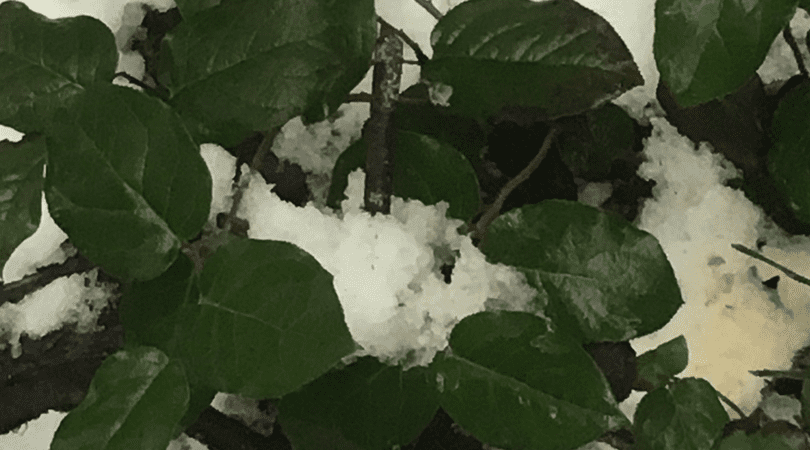Student drawing from a Wilderness Adventure at SHADOW.
On a wintery walk around the preserve, now that all the deciduous leaves have dropped, it’s almost impossible to miss the shiny, jewel-green leaves of Salal or Gaultheria shallon. Salal often grows as a shrub but can also creep like ground cover, and thus can vary from several inches to five meters tall! The leaves are evergreen and thick with a waxy shine and an egg-like shape. Another identifier is their alternate branching. They love to grow in coniferous forests from the seashore to rocky bluffs but prefer medium to low elevations. Around the preserve, you can find them growing everywhere but are very apparent on the Boardwalk Trail through Shadow Lake Bog, right by the Education Center.

In the spring we can start looking for the tiny white or pink flowers to grow on the Salal. There flowers are urn-shaped and will go on to produce the purple to dark blue fruit, Salal berries*. These berries have been used by Native Americans in our region for many years. They are juicy and sweet and were mashed, dried, and pressed into flavorful cakes. The Haida mixed the berries with salmon eggs to thicken the eggs and add sweetness. More recently, Salal berries are popular to preserve in jams or jellies.
This incredible species is a special part of our Pacific Northwest forests and has a long history that is intertwined with the people of our region. This winter look for its distinctive, showy leaves while they are easy to spot. By getting to know this plant now, it will make summer berry snacking all the more enjoyable!
*Interestingly, Salal doesn’t produce true berries and like a blueberry, are actually swollen sepals.



Recent Comments